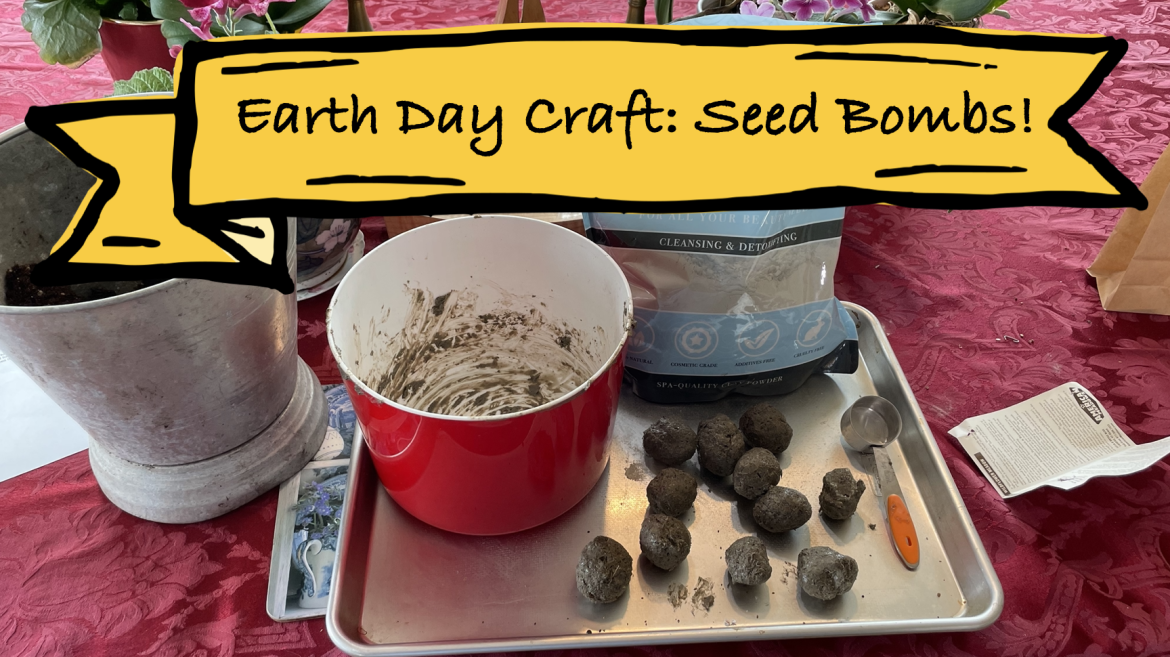Next weekend we celebrate Earth Day. It will be a busy weekend for me as I am speaking at the Inhabit conference on Saturday and then giving the sermon at our church on Sunday. I am really looking forward to these opportunities. Preparing for events like this always stirs my creativity, encourages me to do research and inspires my own practices.
This year at church I will provide the congregation with the opportunity to make seed bombs. It is simple, fun and something that kids and adults alike enjoy. It is a great way to remind ourselves of the miraculous power of seeds that fill our gardens with life and provide us with food. It is also a great stimulus to walk your neighbourhood to identify places where you would like to see new life emerge.
I love the concept of bombs of peace rather than of war, and seed bombs are something all of us can make and use no matter how black a thumb we think we have.
There are 2 ways to make these – the first with air dry clay and the other with clay powder. The advantage of using air dry clay is that it is less mess, while the advantage of clay powder is that it provides a more tactile and I think fun experience. It is also a very spiritual experience. As I mixed the soil and clay together it felt like kneading bread, a very comforting exercise. Adding the water gave a sense of reverence, almost a sacramental experience. As I mixed I meditated on Genesis 2:7-9.
“One day the Eternal God scooped dirt out of the ground, sculpted it into the shape we call human, breathed the breath that gives life into the nostrils of the human, and the human became a living soul.The Eternal God planted a garden in the east in Eden – a place of utter delight – and placed the human whom he had sculpted there. In this garden, the Creator of all made the ground pregnant with life – bursting forth with nourishing food and luxuriant beauty. The Eternal God created trees, and in the center of this garden of delights stood the tree of life and the tree of the knowledge of good and evil. (Gen 2: 7-9 Adapted from The Voice).
I looked at the seed balls I created and imaged God the cosmic gardener looking at them with delight and joining me as I imagined all the places I would like to spread them.
Seed Bomb Recipe
Gather a few basic supplies
- A small bag of potting soil or compost – I use Near Sourced locally sourced, peat free soil.
- A packet of wildflower seeds appropriate for your area.
- A container of or Air dry clay or clay powder
- A water supply if you are using clay powder,
- A bowl to mix your ingredients in.
- Plastic trays or newspaper to reduce mess
- Paper bags
- Garden gloves (optional)
For Clay Powder
Mix the seed, clay and soil together in a bowl
- 3 cups of clay
- 5 cups of soil
- 1 cup of seed.
Knead the mix until the seed is evenly distributed throughout.
Carefully add water, mixing it all together until you get a consistency that you can form into balls about 1” in diameter. Lay them out to bake dry on a sunny windowsill for at least 3 hours. They may take up to 48 hours to dry completely. You might want to use garden gloves to avoid getting your hands messy, especially if you are doing this at church.
For Air Dry Clay
Cover your table with newspaper or work on trays to prevent mess.
Set your bag of soil, a container of clay and a packet of seed on the table.
Mix 1 part seed with 3 parts clay and 5 parts soil into 1-2” balls and roll in your hand until solid
Place in paper bags and take home to dry on a warm window sill.
What To Do With Them
Seed bombs are meant to be shared. Throw them into a bare spot in your garden where you would like to see life emerge or better yet, go out and beautifying your parking strip. Consider throwing your seed balls into a misused space or uncared for street planters. This is allowed in Seattle but not everywhere. Much as you might like to throw these into contaminated private spaces it is not legal so please resist. In some parts of the U.S. and in other cities and countries it is illegal to beautify public spaces so make sure you know the rules and regulations of where you live before you start throwing them – unless you want to become a guerrilla gardener or join the pothole gardener and become even more creative in the way you bring beauty into unexpected places.
 We all need the Wholeness of God…this resource includes reflections and activities for coping and thriving during challenges in search of shalom as well as hope for restoration.
We all need the Wholeness of God…this resource includes reflections and activities for coping and thriving during challenges in search of shalom as well as hope for restoration.

